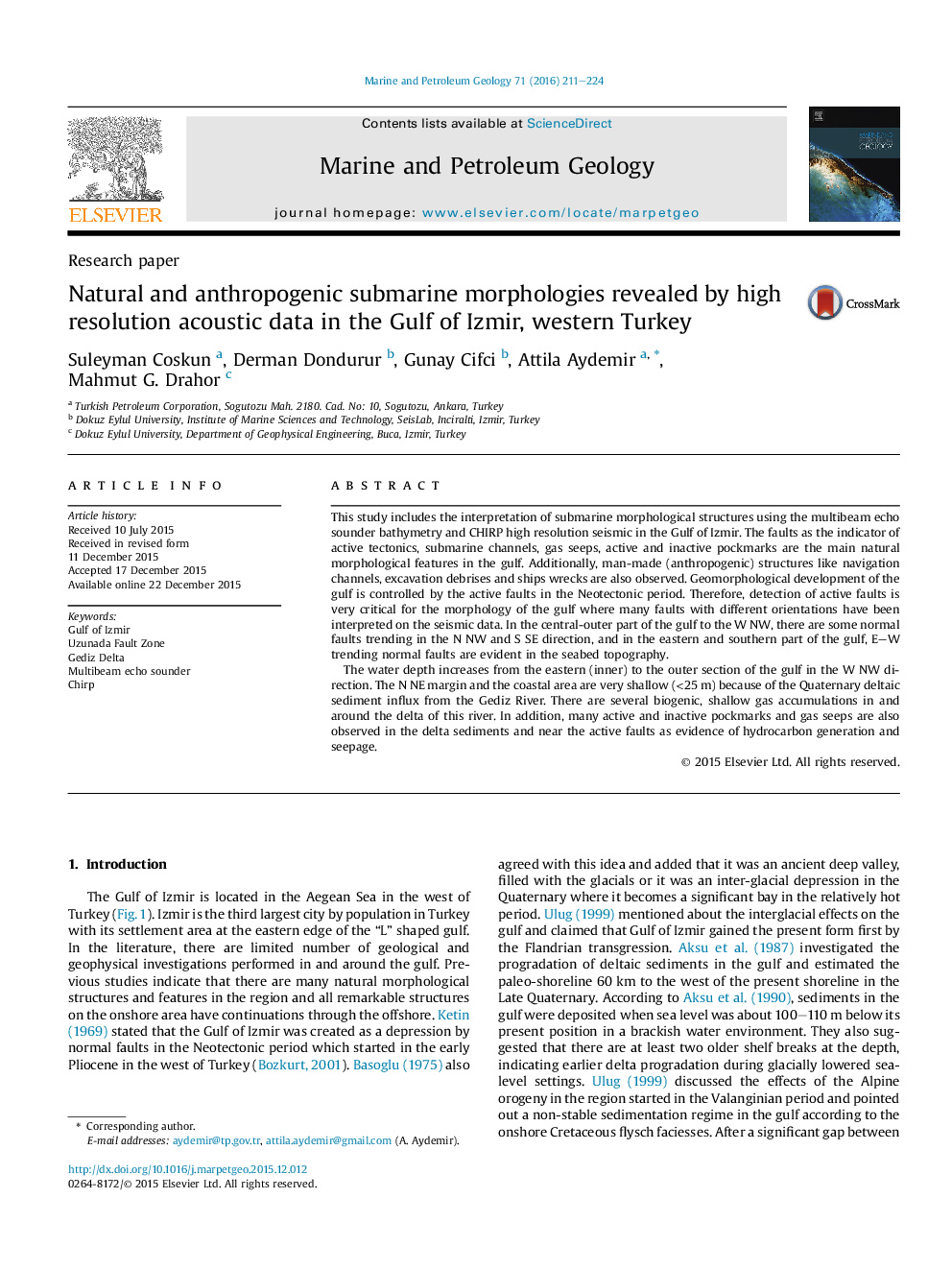| کد مقاله | کد نشریه | سال انتشار | مقاله انگلیسی | نسخه تمام متن |
|---|---|---|---|---|
| 4695425 | 1637156 | 2016 | 14 صفحه PDF | دانلود رایگان |
• Natural–unnatural submarine features are mapped in the gulf for the first time.
• Multibeam echosounder and chirp high resolution seismic data were interpreted.
• Seabed morphology reflects the extension of onshore tectonic units in the region.
• Ships wrecks, excavation dump areas and navigation channels are observed apparently.
This study includes the interpretation of submarine morphological structures using the multibeam echo sounder bathymetry and CHIRP high resolution seismic in the Gulf of Izmir. The faults as the indicator of active tectonics, submarine channels, gas seeps, active and inactive pockmarks are the main natural morphological features in the gulf. Additionally, man-made (anthropogenic) structures like navigation channels, excavation debrises and ships wrecks are also observed. Geomorphological development of the gulf is controlled by the active faults in the Neotectonic period. Therefore, detection of active faults is very critical for the morphology of the gulf where many faults with different orientations have been interpreted on the seismic data. In the central-outer part of the gulf to the W NW, there are some normal faults trending in the N NW and S SE direction, and in the eastern and southern part of the gulf, E–W trending normal faults are evident in the seabed topography.The water depth increases from the eastern (inner) to the outer section of the gulf in the W NW direction. The N NE margin and the coastal area are very shallow (<25 m) because of the Quaternary deltaic sediment influx from the Gediz River. There are several biogenic, shallow gas accumulations in and around the delta of this river. In addition, many active and inactive pockmarks and gas seeps are also observed in the delta sediments and near the active faults as evidence of hydrocarbon generation and seepage.
Journal: Marine and Petroleum Geology - Volume 71, March 2016, Pages 211–224
